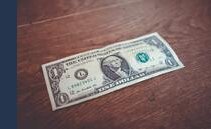Trump has suggested imposing capital controls to curb foreign investor demand for American assets and the dollars needed to buy them.

Donald Trump has said he wants to reverse the strong dollar policy that has supported the U.S. economy since the early 1990s.
His choice for vice president, J.D. Vance, goes even further. The Ohio senator also wants to eliminate the dollar’s role as a global currency. “The strong dollar is kind of the sacred cow of the Washington consensus,” he explained in 2023, “but when I look at the American economy, I see on the one hand our massive consumption of mostly useless imports and on the other our industrial base emptied, I wonder if reserve currency status also has downsides."
A reduced global role for the US dollar is not completely implausible. Indeed, several recent developments have made this change more likely than in previous decades.
The first is that the United States has aggressively weaponized its currency as a weapon against geopolitical rivals, most notably freezing Russia’s dollar reserves after invading Ukraine in 2022. This has prompted central banks to diversify their reserves, reducing the US dollar’s share of global foreign exchange reserves to 59%, from 73% in 2001.
Meanwhile, international bodies have stepped up their efforts to develop viable alternatives to the dollar-based payment system on which global trade depends. The Bank for International Settlements is currently testing one such system, Project Agorá, to connect seven payment systems operated by members of the Organization for Economic Co-operation and Development. Another one, called mBridge, wants to provide seamless settlements using central bank digital currencies, including the Chinese renminbi.
A third reason to take seriously the prospect of a change in the global monetary regime is that the current system is relatively new. It was only in 2022 that financial regulators completed the migration of global credit from a model based on unsecured loans and priced on the London Interbank Offered Rate (LIBOR) to one based on secured loans and the new Secured Overnight Financing Rate (SOFR). One consequence is that global finance is now more closely linked to the supply of high-quality US dollar collateral. This new regime has yet to be tested in a crisis.
However, the dollar remains unique in many ways. U.S. financial markets are by far the largest and most liquid in the world. An overwhelming proportion of international trade invoices are in dollars. Above all, the Federal Reserve is willing and able to support global dollar-denominated finance, as it demonstrated most recently when the pandemic rocked markets in 2020. Even Vice President Vance would be hard-pressed to shake the dollar’s status as the preferred safe haven in a financial storm.
The value of the dollar relative to other currencies, however, is a different matter. There is no doubt that the US dollar is historically strong. In real, trade-weighted terms, it has risen more than 30% over the past decade and is near its highest in 40 years, according to BIS calculations.
leggi anche
Why isn’t de-dollarization taking off (yet)?

Trump’s proposed policies would do little to reverse this trend. Let’s start with trade. Trump has talked about imposing a 10% tariff on all imports, rising to 50% or 60% for products from China. If implemented, these measures would likely strengthen the dollar as higher import prices would curb demand for foreign goods and services and, therefore, the currency needed to purchase them. They are also likely to fuel inflation, prompting the Fed to keep interest rates high, thus attracting further capital flows.
Trump’s future tax plans could make things worse. The former president has promised to renew tax cuts introduced during his first term and reduce corporate taxes. Such generosity would increase demand, leading to an even tighter monetary policy and, therefore, an even stronger dollar.
These contradictions are why Trump supporters are discussing less conventional strategies. The former real estate developer has suggested imposing capital controls to curb foreign investor demand for American assets and the dollars needed to buy them. The Republican Party’s program for 2024 even seems to suggest an outright ban on Chinese purchases of direct equity investments or real estate.
Trump’s allies have discussed limiting the Fed’s independence to reduce interest rates. Fed Chair Jerome Powell’s term expires in 2026: a replacement may be more conducive to lower interest rates. Another option would be to negotiate an international monetary agreement to weaken the U.S. dollar modeled after the 1985 Plaza Accords, which depreciated the currency relative to the yen and the Deutsche Mark. The theory is that the threat of tariffs could bring China and Japan to the negotiating table.
The benefits of a weaker dollar have historically not been large enough to gain sufficient support. While parts of the domestic economy would benefit from a cheaper dollar, the financial sector prefers a firm currency. It is also unclear why Asian creditor nations would agree to help their largest debtor devalue.
America’s allies in the emerging world, meanwhile, are generally US dollar debtors who would benefit from a weaker dollar. In the short term, slowing growth will allow the Fed to lower rates anyway, alleviating upward pressure on the U.S. currency. While the dollar’s role as a global currency is here to stay, the dollar’s days of strength are numbered – regardless of who wins November’s presidential election.
Original article published on Money.it Italy 2024-08-02 07:00:00. Original title: Il piano di Trump per indebolire il dollaro americano




